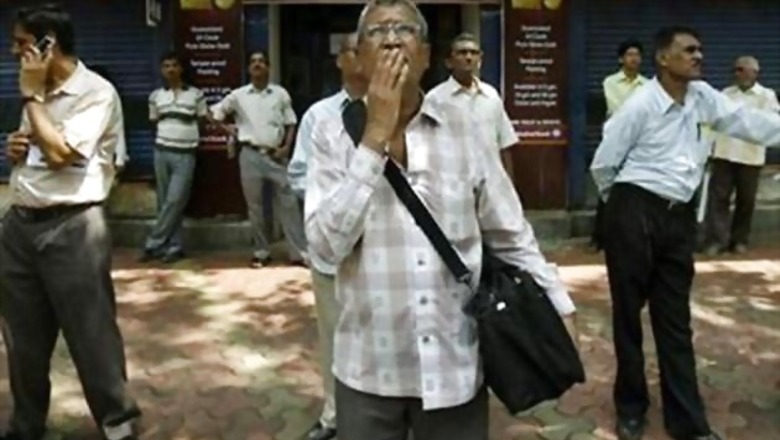
views
Mumbai/Bangalore: The BSE Sensex should gain 10 per cent between now and the end of the year, though only reaching levels seen in July 2011, provided economic growth recovers from a recent lull, a Reuters poll showed on Thursday.
The 30-share BSE index will rise to 18,750 points by the end of 2012, according to the median forecast from a survey of 22 investment houses conducted over the past week, and then rise further to 20,400 by the middle of next year.
Indian shares, once considered a beacon of the Asian growth story, have lost their shine recently on concerns New Delhi lacks the ability to pass tough economic reforms that would spur growth and reignite investor confidence in the country.
The median estimate shows reduced expectations for the year-end compared with 19,500 in each of the two previous quarterly polls, and means the index will only recoup part of its losses of 2011, when it shed a quarter of its value.
But it still predicts a significant gain, despite a slump in the rupee currency to record lows and threats to India's investment-grade credit rating.
End-year projections for the index, which closed on Thursday at 16,990.76, ranged from 15,300 to 21,000 points.
"Our hypothesis is that the government is likely to utilise the next six months' window ahead of state elections and pass policy reforms to boost growth. This will keep the markets buoyant," said Sundar Subramoney, deputy head of research at Almondz Global Securities.
The BSE index is set to post its biggest monthly gain in June since January, despite disappointment after the RBI did not cut rates even after India's economy grew at a nine-year low rate of 5.3 per cent in the January-March quarter.
Analysts still believe the central bank will lower rates later this year, while they expect April's 50 basis point cut to start filtering through the economy, helping support growth in months ahead.
A slump in oil prices, with US crude futures down more than 25 per cent from their 2012 peak in February, is also good for the economy as India imports most of its crude.
Most importantly, falling oil prices would help narrow the country's large fiscal deficit and its current account deficit, a big factor behind the rupee's slide.
"The currency depreciation is a reflection of the credit downgrade (changes in India's rating outlook to negative) that has already happened. Unless the government salvages the current account outlook they will not see ratings upgrades happening very soon or the outlook remaining stable," said Mahantesh Sabarad, analyst at Fortune Equity.
Both Standard & Poor's and Fitch Ratings cited concerns about fiscal health, along with slowing policy reforms, as key reasons behind their recent decisions to cut the outlook for India's BBB- ratings to negative.
However, 14 out of 18 poll respondents said they do not expect India to fall into the "junk" rating category, while 13 out of 18 said the government will pass policy reforms needed to bolster growth and cut deficits.
"We believe falling crude oil prices, coupled with a fall in gold imports, should augur well from macro point of view," said Deven Choksey, managing director for KR Choksey Securities.
"We expect post the presidential election, the government would focus on policy reforms which drive investment sentiment in the country," he added.
The government has not yet passed key reforms such as a potential increase in diesel prices, though some analysts expect a new push for reforms after July 19 elections for the ceremonial post of President.
On Monday, the country announced measures to bolster the embattled rupee, including a $5 billion increase in the cap on foreign investment in government bonds, and analysts say more measures are likely.
Action comes after the government announced on June 22 that Swedish retailer IKEA would invest 1.5 billion euros to open 25 stories in the country, seen as a welcome step towards attracting foreign investment.




















Comments
0 comment